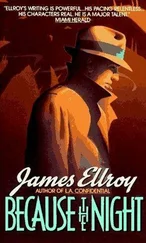November, 1981:
Surveillance reveals that Paula Kurzinski sleeps over at her boyfriend’s house on Wednesday and Saturday rights; George Kurzinski’s girl friend sleeps with him, at the siblings’ apartment, on those nights. Tick tick tick tick tick.
January, 1982:
Securing the floor plan of the Kurzinskis’ apartment from the Sharon Office of City Planning. Tick tick tick tick tick tick.
February, 1982:
Becoming expert at picking locks identical to the lackluster “Security King” on the Kurzinskis’ front door. Tick tick tick tick.
April, 1982:
Disguise, drugs and weaponry procured; escape route and four alternates mapped out. Tick tick tick tick tick tick tick tick.
May 15, 1982:
Run-through of the Kurzinskis’ apartment successfully executed; auxiliary blades stashed under bedroom and living-room carpets; loaded .25-caliber Beretta found in Paula’s top dresser drawer; loaded .32 S. & W. revolver found under George’s mattress. Tick tick tick tick tick.
May 28, 1982:
Second run-through of Kurzinskis’ apartment; blank cartridges placed in both weapons; as added precaution both hammers bent ⅛" to the side to ensure misfire.
Tick
Tick
Tick
Tick
Tick
Tick
Tick
Tick
Tick........
From Law Enforcement Journal, May 30, 1982, Issue:
FEDERAL TASK FORCE “ATTACKING” SERIAL KILLERS WITH DIVERSIFIED APPROACH STRATEGY
Quantico, Virginia, May 15:
Criminal phenomena, however long-standing, are not really certified until they are given a title. “Mass Murderer” and “Thrill Killer” are old staples of public and law-enforcement jargon, used to designate, respectively, people who murder more than one person in a one-time-only fit of rage, and people (almost always men) who kill for no apparent reason. Recent revelations, primarily the Ted Bundy case (See LEJ 10/9/81), have spawned a new title, a “buzzword” that seems certain to capture the public’s imagination. The F.B.I., cognizant of the phenomenon for some time, will be the likely instrument of popularizing the title, for they are the first American law enforcement agency to concertedly “attack” the type of criminal the title designates — the Serial Killer.
According to F.B.I. Inspector Thomas Dusenberry, the serial killer is defined as: “A perpetrator who kills repeatedly, one victim or set of victims at a time. Our statistical prototype serial killer is a white male of above average to high intelligence, twenty-five to forty-five years old. That is a constant, while everything else regarding this type of perpetrator isn’t, which is what makes them so difficult to apprehend.
“For one thing, serial killers often alter their M.O. to suit their victim of the moment. They may kill one person for sexual gratification, one for money. They may strangle one person, shoot another. Serial killers have been known to rape a half-dozen women victims, then sexually ignore a half-dozen others.
“Also, these men tend to travel and tend to dispose of their victims so that their bodies cannot be found. Aside from the complex serial-killer psyche and M.O. patterns, it is their often transient life-style that adds to their elusiveness — they play on the inadequacy of American police communication systems.
“There are fifty states in this country, served by untold thousands of police agencies. Agency-to-agency communication within individual states has been adequate at the identification level for years, but state-to-state communication of information is a joke, and is the number-one impeding factor in the investigation of possibly related homicides and disappearances.”
How, then, does the F.B.I.’s Serial Killer Task Force intend to address this problem?
Inspector Dusenberry: “Once a killer crosses a state line after committing a murder, he’s a federal offender. So what we’ll be doing is cross-checking computer statistics on unsolved homicides and disappearances from all fifty states, going back ten years. If state-to-state links are made, we will be requesting the complete case files from the applicable agencies, and we will be communicating by telephone with the investigating officers. We will have M.O. cross-checking logs, and logs for physical evidence, circumstantial probability and a half-dozen logs compiled from reports made by the forensic psychologists attached to the Task Force. Patterns are likely to emerge from all this information, and we will hypothesize from that information, then initiate follow-up investigations staffed with experienced Criminal Division agents.”
An entire wing of a building on the grounds of the F.B.I. Academy at Quantico has been taken over by the Task Force. The offices are packed with reams of blank paper, desks and computer terminals, along with a giant computer with fifty-state police feed-in. Known to Task Force agents as “Serial Sally,” this brain device will be the starting point of all possible investigations. Already programmed with data on twenty-seven resolved serial killer cases, “Serial Sally” will be assisted by a half-dozen crack forensic psychologists with extensive field experience, three forensic pathologists specializing in homicide evidence, and four criminal division agents, men with fifteen years and up with the Bureau — the “Paperwork Jockeys” who will be trawling for links, connections and clues.
“I’m anxious to get started,” Inspector Dusenberry, 47, the Task Force’s Agent in Charge, told L.E.J. “I’ve already read up a storm on the subject. It’s depressing stuff, and the numbers are staggering. A man in Alabama killed twenty-nine women in two years; Gacy in Chicago killed thirty-three. There’s our friend Ted Bundy, of course, and then we’ve got the stats on missing and presumed-murdered children. They’re more than staggering. The police in Anchorage, Alaska, have a suspect that they make for sixty-one killings, perpetrated within eighteen months. The pain behind all of it is staggering, and I think the serial killer problem is America’s number-one law-enforcement priority.”
Inspector Dusenberry, who joined the Bureau in 1961, is a graduate of Notre Dame Law School and has sixteen years of Criminal Division experience, mostly in supervising bank robbery investigations. Married and with a college-age son and daughter, he is grateful that the Task Force assignment came at a time when his children are grown and his wife is back in college getting an advanced degree in Art History. “It’s going to be a long load of long hours,” he told L.EJ. “My kids and wile in school, and the desk nature of the job will make it a whole lot easier to apply myself. If I was spending this kind of time on the street doing robbery investigations, I’d be worried about them worrying about me.”
Tick
Tick
Tick
Tick
Tick
Tick
Tick
Tick
Stop-time.
12:16 A.M., June 5, 1982.
I stuck my breaker pick in the keyhole of the Kurzinskis’ apartment door. There was a slight give, and I pushed the door inward, to a point just short of where I knew the inside chain would stop it. There was a snap/clink noise as the chain rattled, and I pulled the door toward me for slack, then popped the chain off with the handle of my pick gouger. The loose end hit the doorjamb, and I heard an unmistakable sound register in George Kurzinski’s bedroom: the hammer of his .32 being pulled back.
I eased the door shut and padded through the dark living room, then flattened myself into the far wall, by the hallway, and the light switch. Unclipping the ax that hung from my web belt, I waited for footsteps to creak in my direction. When the first one hit my ears, I tingled. It was exactly nine paces from George Kurzinski’s bedroom to here; his life would consist of that many more seconds.
Читать дальше












